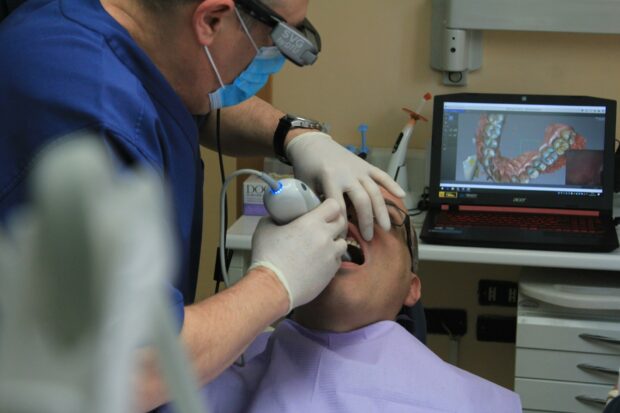Every bowhunter knows that moment—the perfect shot opportunity presents itself, your heart pounds, and everything depends on the equipment you’ve chosen. The broadhead attached to your arrow can make the difference between a clean, ethical harvest and a wounded animal that escapes into the wilderness.
Selecting the right broadhead isn’t just about accuracy at the range. It’s about ensuring adequate penetration, creating effective wound channels, and maintaining the highest ethical standards while hunting.
The wrong choice can lead to poor blood trails, lost game, and the kind of hunting experience that haunts you for seasons to come. This comprehensive examination of broadhead selection covers everything from understanding different designs to matching your choice with your bow setup.
Whether you’re preparing for your first hunting season or looking to upgrade your current arsenal, these insights will help you make informed decisions that support both successful hunts and ethical practices in the field.
Understanding Broadhead Fundamentals
Fixed-Blade vs. Mechanical Designs
Fixed-blade broadheads feature stationary cutting surfaces that remain in the same position from the moment they leave your bow until impact.
These designs offer several advantages for hunters prioritizing reliability and penetration. Their solid construction eliminates mechanical failure points, making them ideal for hunters who demand consistency across various hunting conditions.
Mechanical broadheads deploy their cutting blades upon impact, typically offering larger cutting diameters than their fixed-blade counterparts. These designs excel in situations where maximum tissue damage is desired, but they require sufficient kinetic energy to function properly.
Key considerations for each type include:
Fixed-Blade Advantages:
- Superior penetration on large game
- No mechanical parts to fail
- Consistent flight characteristics
- Better performance in windy conditions
Mechanical Advantages:
- Larger cutting diameter
- Field point accuracy
- Reduced wind drift during flight
- Devastating wound channels on the appropriate game
Weight Considerations
Broadhead weight directly impacts arrow flight, kinetic energy, and penetration capabilities. Most hunting arrows perform optimally with broadheads ranging from 85 to 125 grains, though specific bow setups may require different weights.
Heavier broadheads increase arrow momentum, improving penetration on large game animals with thick hide and dense bone structure. However, they also reduce arrow speed and create a more pronounced trajectory arc at longer distances.
Lighter broadheads maintain higher velocities and flatter trajectories, making them suitable for hunters who frequently take shots beyond 30 yards. The trade-off comes in reduced momentum, which can affect penetration on heavily muscled game animals.
Matching Broadheads to Game Animals
Small Game Applications
Small game hunting requires broadheads that create immediate incapacitation without destroying excessive amounts of meat. For animals like rabbits, squirrels, and birds, broadheads with cutting diameters between 1 and 1.25 inches typically provide optimal results.
Fixed-blade designs often work best for small game because they maintain structural integrity even when striking small bones. The clean cutting action preserves meat quality while ensuring quick, ethical kills.
Medium Game Considerations
Deer, antelope, and similar-sized animals represent the most common targets for bowhunters. These animals require broadheads capable of penetrating rib cages and creating substantial wound channels for effective blood trails.
Both fixed-blade and mechanical broadheads can be effective on medium game, but the choice depends on your specific hunting situation:
- Dense cover hunting: Fixed-blade broadheads navigate brush better
- Open country shots: Mechanical broadheads offer superior accuracy at distance
- Close-range hunting: Either design works well with proper shot placement
Large Game Requirements
Elk, moose, and other large game animals demand maximum penetration and bone-breaking capability. These situations typically favor heavy, fixed-blade broadheads with cutting diameters between 1 and 1.5 inches.
The dense muscle mass and heavy bone structure of large game require broadheads that maintain structural integrity through complete pass-through shots. Single-bevel designs can be particularly effective, as their twisting action helps them navigate around or through bone obstacles.
Technical Performance Factors
Penetration Dynamics
Penetration depends on several interconnected factors working together to drive your broadhead through the target animal. Kinetic energy, broadhead design, and arrow construction all contribute to penetration effectiveness.
Sharp broadheads require less force to initiate cutting, allowing more energy to be used for penetration. Dull or poorly designed cutting edges waste energy overcoming resistance, reducing overall effectiveness.
Broadhead geometry also affects penetration. Designs with gradual tapers and reinforced construction transfer energy more efficiently than broadheads with abrupt angles or weak points that can bend or break upon impact.
Aerodynamic Considerations
Arrow flight consistency is crucial for accurate shot placement, making aerodynamic performance a critical factor in broadhead selection. Fixed-blade broadheads with exposed cutting surfaces create more wind resistance than mechanical designs, potentially affecting accuracy at longer ranges.
The key to managing aerodynamic challenges lies in proper tuning and practice. Even fixed-blade broadheads can achieve excellent accuracy when matched properly with your bow setup and shooting form.
Cutting Diameter Impact
Larger cutting diameters create wider wound channels, potentially improving blood trails and reducing tracking distances. However, an increased cutting surface also means greater resistance during penetration, which can reduce the depth of arrow penetration.
The optimal cutting diameter balances wound channel effectiveness with penetration requirements based on your target game and hunting situations.
Shot Placement and Ethical Considerations
Vital Zone Targeting
Proper shot placement remains more important than broadhead selection for achieving ethical kills. Understanding animal anatomy and restricting shots to vital zones ensures quick, clean harvests regardless of your chosen broadhead design.
The heart-lung area provides the largest vital target and the highest probability of recovery, even with marginal hit placement. Broadheads that create wide wound channels in this area typically produce excellent blood trails and short tracking distances.
Energy Transfer Requirements
Different game animals require varying amounts of kinetic energy for effective penetration and tissue damage. Calculating your arrow’s kinetic energy helps determine if your setup provides adequate power for your intended quarry.
Minimum energy requirements vary by animal size:
- Small game: 15-25 foot-pounds
- Medium game: 25-40 foot-pounds
- Large game: 40+ foot-pounds
These numbers serve as general guidelines, but shot angle, broadhead design, and animal condition can all affect actual energy requirements.
Shot Distance Limitations
Ethical shot distances depend on your accuracy capabilities, equipment performance, and environmental conditions. Most bowhunters should limit shots to ranges where they can consistently place arrows in a 6-inch circle.
Longer shots increase the likelihood of marginal hits, wounded animals, and difficult recovery situations. Conservative shot selection demonstrates respect for game animals and supports positive hunting ethics.
Tuning and Setup Optimization
Arrow Spine Matching
Proper arrow spine ensures consistent broadhead flight and accuracy. Arrows that are too stiff or too weak will not fly consistently, making accurate shot placement difficult regardless of your broadhead choice.
Professional spine testing or consultation with experienced archery technicians can help identify the optimal arrow spine for your specific bow, draw length, and broadhead combination.
Broadhead Alignment
Even minor alignment issues can cause significant accuracy problems with broadheads. Using broadhead alignment tools ensures that your cutting edges are perfectly perpendicular to your arrow shaft, eliminating one potential source of flight inconsistency.
Regular alignment checks are particularly important when using broadheads with replaceable blades, as blade installation can introduce small alignment errors.
Practice Protocols
Shooting broadheads during practice sessions is essential for understanding their flight characteristics and identifying any tuning issues. However, broadhead practice can quickly become expensive due to blade damage and replacement costs.
Effective practice strategies include:
- Using dedicated practice broadheads for most sessions
- Shooting hunting broadheads only occasionally to verify zero
- Practicing from various angles and distances
- Shooting in different wind conditions
Maintenance and Storage
Blade Sharpness Standards
Razor-sharp broadheads require less energy to penetrate and create cleaner wound channels than dull blades. Regular sharpness testing using paper or shaving tests helps maintain optimal cutting performance.
Different blade materials hold edges differently. High-carbon steel blades can be sharpened to extremely fine edges but require more frequent maintenance. Stainless steel options hold edges longer but may not achieve the same level of initial sharpness.
Storage Best Practices
Proper storage protects broadhead integrity and maintains sharpness between hunting seasons. Moisture exposure can cause corrosion, while physical contact with other equipment can damage cutting edges.
Storage considerations include:
- Using individual blade guards or cases
- Storing in dry, temperature-controlled environments
- Regular inspection for damage or corrosion
- Rotating stock to ensure freshness
Replacement Schedules
Even the highest-quality broadheads have limited service lives. Blades that have been resharpened multiple times may develop stress points that can lead to failure during critical moments.
Establishing replacement schedules based on usage, sharpening frequency, and visible wear helps ensure reliable performance when hunting opportunities arise.
Making Your Final Selection
Choosing the right broadhead requires balancing multiple factors specific to your hunting situation, bow setup, and target game. The best hunting arrows paired with inappropriate broadheads will not deliver the ethical shot performance that responsible hunters demand.
Start by honestly assessing your hunting conditions, typical shot distances, and target animals. Match these requirements with broadhead designs that complement your bow’s performance characteristics and your shooting abilities.
Remember that the most expensive or technologically advanced broadhead isn’t necessarily the best choice for your specific needs. Consistency, reliability, and proper execution matter more than marketing claims or peer recommendations.
Testing different options through careful practice and evaluation will reveal which designs work best with your equipment and shooting style. This investment in preparation pays dividends through improved confidence and ethical harvest success when hunting season arrives.
The relationship between hunters, equipment, and game animals demands respect and responsibility. Selecting appropriate broadheads represents one crucial element in maintaining the highest ethical standards while pursuing the hunting experiences that connect us with nature and our heritage as hunters.







